Think Spring in August: Time to Order Fall Bulbs!
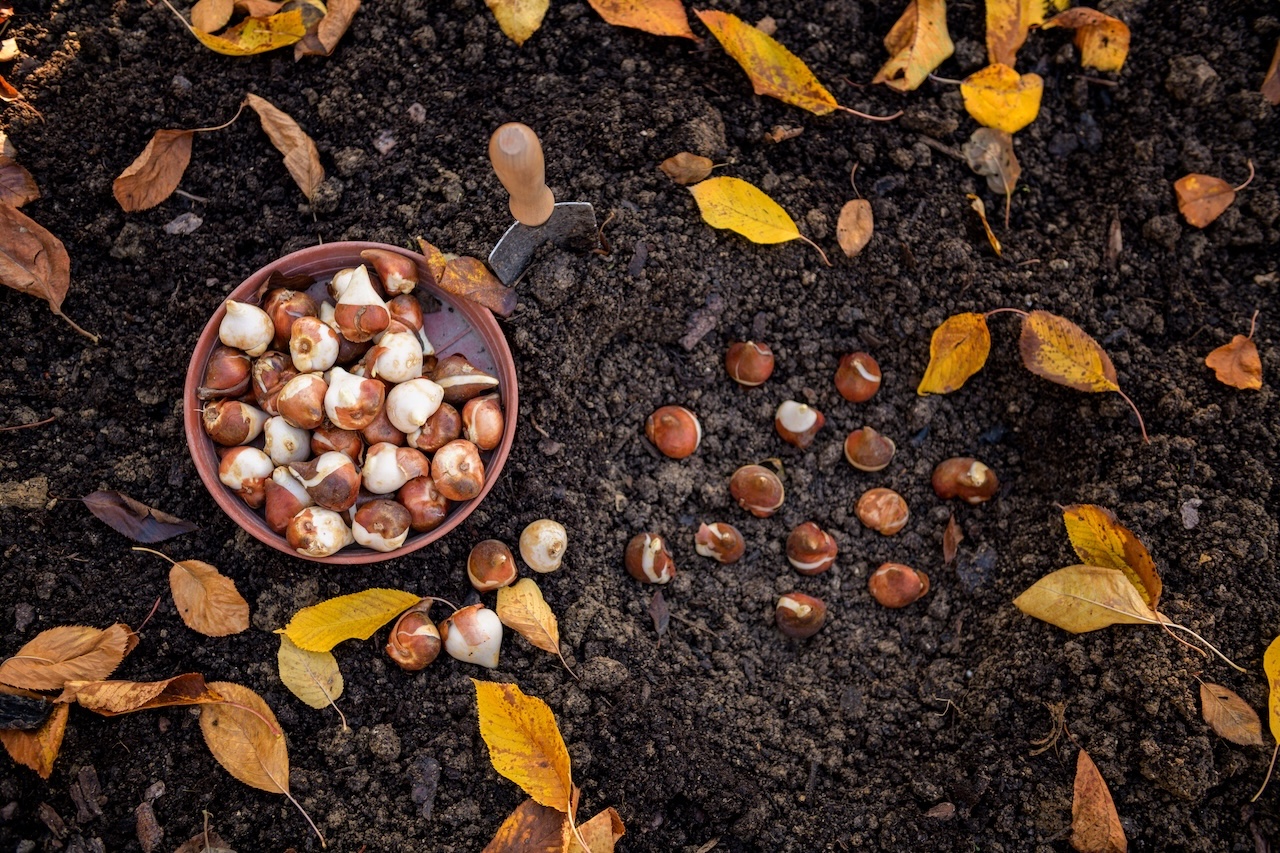
It might be blazing hot outside and your tomatoes are in overdrive, but August is the perfect time to shift your gardening focus ahead to next spring.
If you want tulips, daffodils, or other cheerful flowers blooming in March or April, now is the time to order. Fall-planted bulbs need cold winter soil to trigger their bloom cycle, and in Boise, planting typically happens from late September through October. Ordering in August gives you the best selection and plenty of time to get your garden ready before the seasons change.
The key is choosing the right bulbs for your space and your goals. Whether you’re dreaming of a colorful front yard, early blooms under trees, or fragrant flowers near your front door, there is a bulb (or a combination of them) that can get you there.
Best Spring Bulbs for Boise
Not sure what to order? Here’s a closer look at some of the most reliable, eye-catching, and Boise-friendly fall-planted bulbs to consider. These picks are all cold-hardy and perform well in our region’s dry summers and chilly winters.
Daffodils (Narcissus)
Cheerful, reliable, and unbothered by deer, gophers, and squirrels, daffodils are one of the easiest bulbs to grow in the Treasure Valley.
- Colors: Mostly yellow, white, and orange, often with two-tone centers or ruffled trumpets
- Bloom time: Early to late spring depending on variety
- Types to try:
- Trumpet – bold and classic
- Tazetta – multiple smaller blooms per stem, often fragrant
- Miniature – compact and great for containers or tight spots
- Where to plant: Beds, borders, under trees, or naturalized in lawn areas
- Planning tip: Combine early, mid, and late-season daffodils for a long-lasting display that spans several weeks
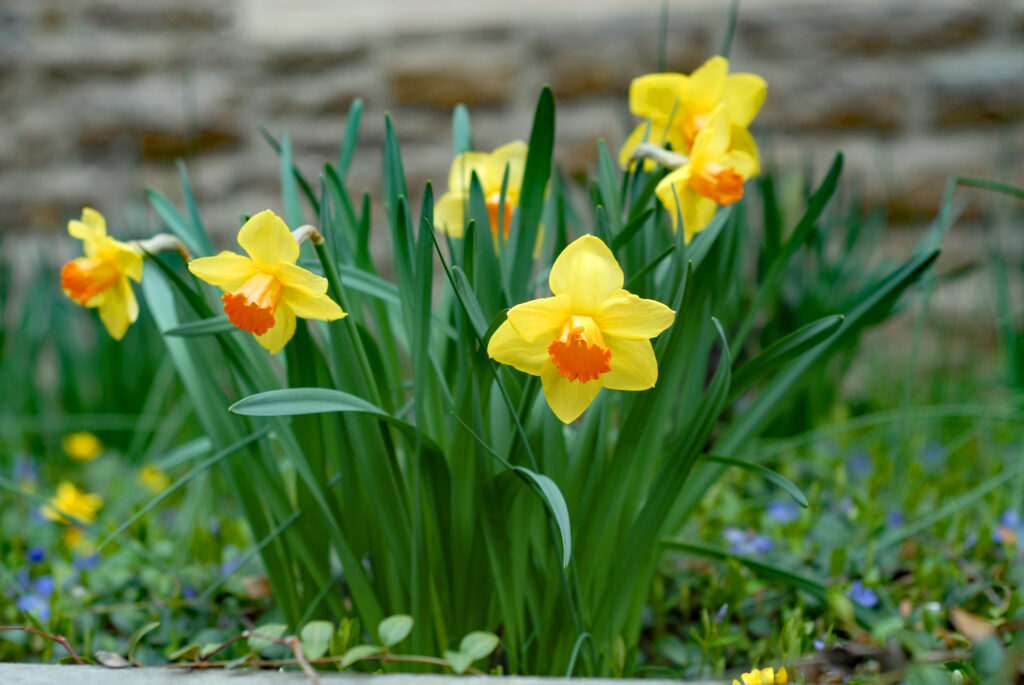
Tulips
Tulips bring unmatched color and drama, but in Boise’s climate, most hybrids perform best as annuals unless you choose varieties that tolerate heat and dry soil.
- Colors: Nearly every shade you can imagine
- Bloom time: Mid to late spring
- Best varieties for repeat bloom:
- Darwin hybrids – tall and strong
- Triumph – compact and reliable
- Species tulips like Tulipa tarda – smaller, better suited to naturalizing
- Where to plant: Borders, containers, or as color highlights in perennial beds
- Note: If replanting every year doesn’t appeal to you, stick with Darwin or species types that are more likely to return
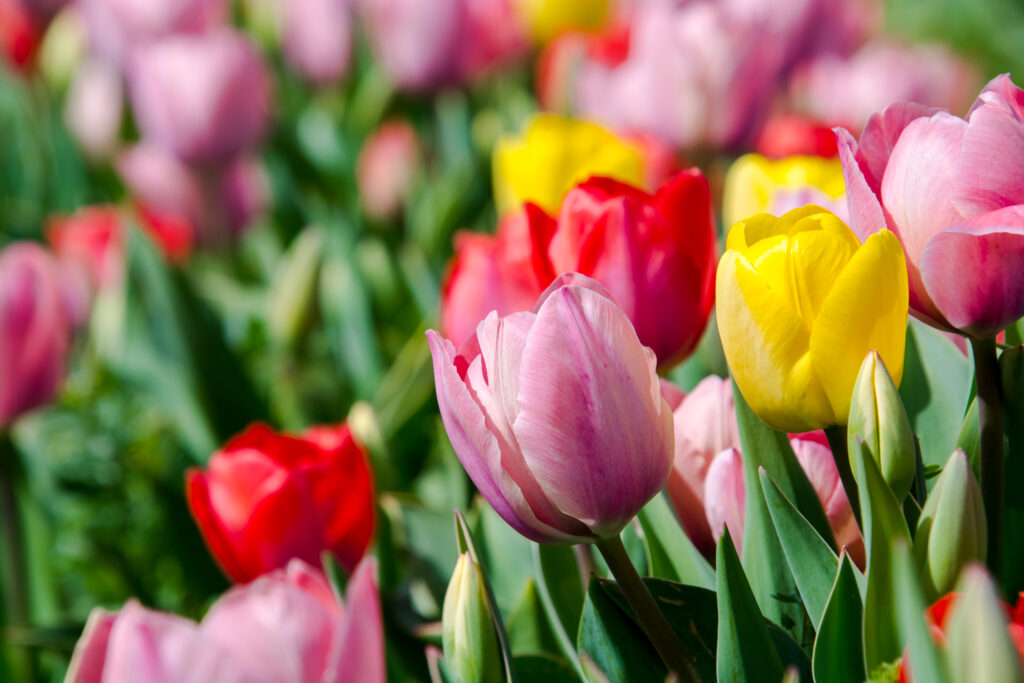
Hyacinths
Compact and fragrant, hyacinths offer big spring impact in small spaces. Their upright flower clusters are ideal for areas where you can enjoy their scent up close.
- Colors: Blue, purple, pink, white, peach
- Bloom time: Early to mid-spring
- Where to plant: Entryways, patios, containers, or near seating areas and paths
- Related option: Grape hyacinths (Muscari) have a similar look and bloom slightly later—but be cautious. They spread quickly and can become invasive in garden beds if not contained.
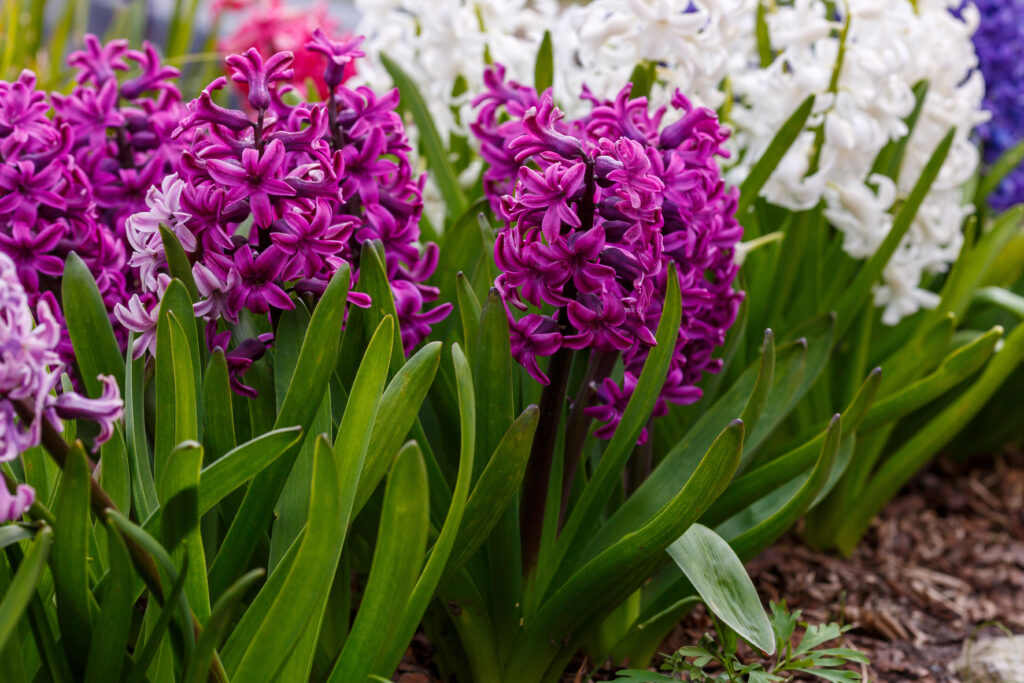
Crocus
These early risers are some of the first to bloom, often pushing through snow. They’re small but mighty, and great for tucking into underused spaces.
- Colors: Purple, white, yellow, striped
- Bloom time: Very early spring
- Top choice: Crocus tommasinianus is especially good for naturalizing and more resistant to squirrels
- Where to plant: Rock gardens, lawns (where mowing is delayed), pathways, or under trees
- Design tip: Plant in dense clusters or wide drifts for a more noticeable show
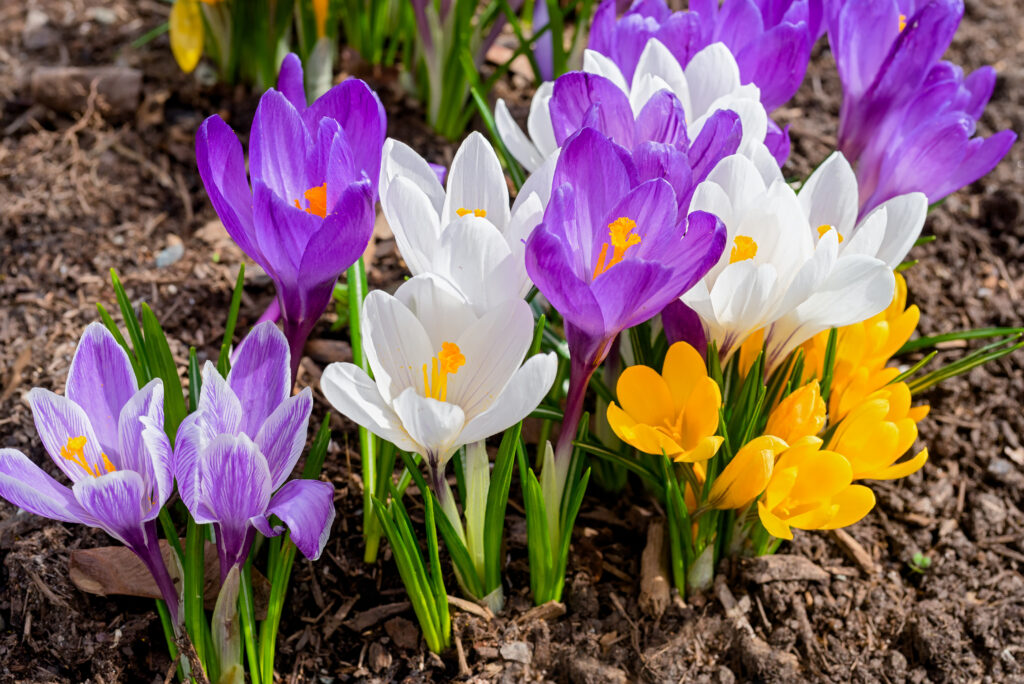
Snowdrops (Galanthus)
Tiny white bell-shaped flowers that bloom in the coldest part of the year, snowdrops are surprisingly tough and always a welcome sight.
- Colors: White with hints of green
- Bloom time: Late winter to very early spring
- Where to plant: Moist, well-drained soil under deciduous trees or in woodland-style garden areas
- Good to know: These often take a couple of seasons to settle in, but once established, they’ll multiply slowly and reliably
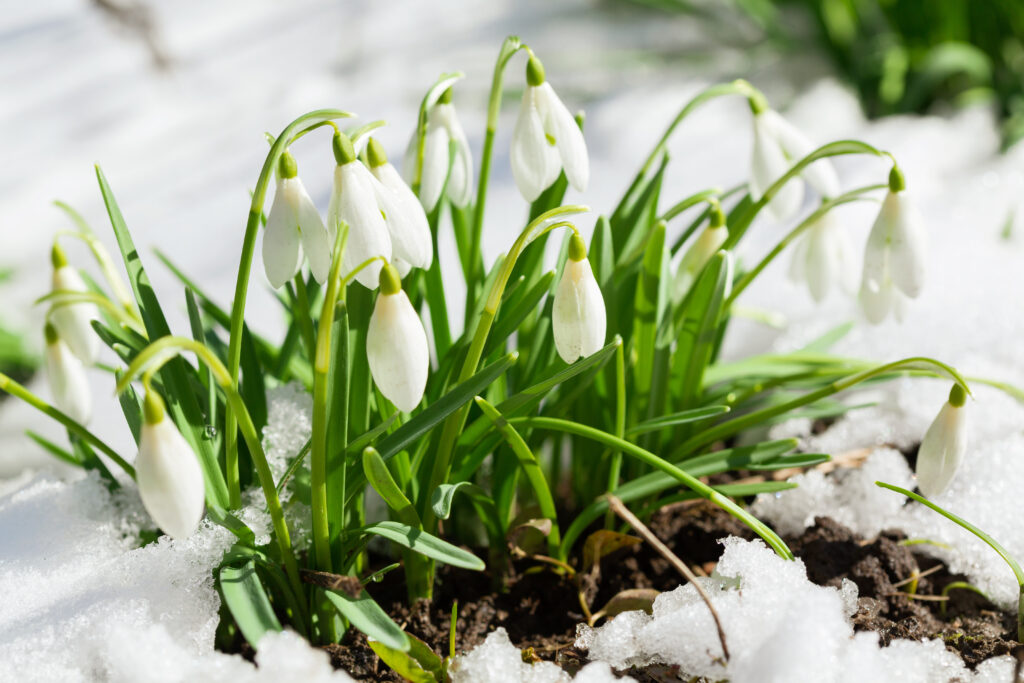
Alliums
Tall, bold, and architectural, alliums make a dramatic statement as the spring bulb show starts to fade. They also attract pollinators and resist deer.
- Colors: Purple, lavender, white
- Bloom time: Late spring to early summer
- Popular choices:
- Allium giganteum – large and showy
- ‘Purple Sensation’ – mid-sized and good in groups
- Drumstick alliums – smaller and bloom later, nice among grasses
- Where to plant: Mixed borders, cottage gardens, or among ornamental grasses
- Local tip: Due to Idaho’s Allium quarantine, many online vendors are unable to ship from out of state. Check around at your local nurseries for these hard to find bulbs.
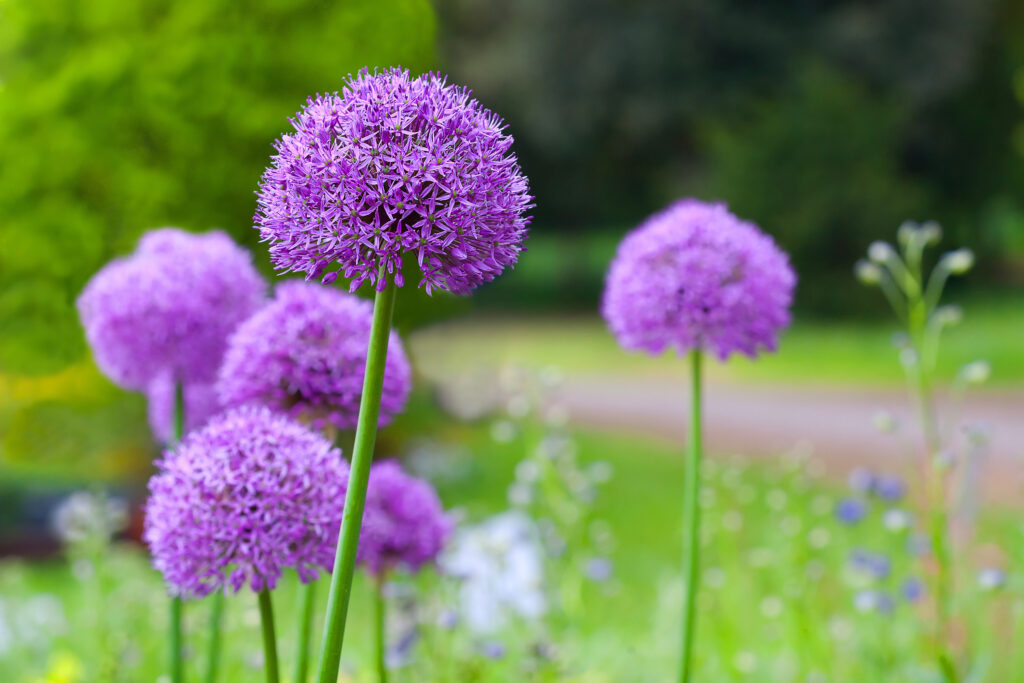
Frittlary(Fritillaria)
If you’re looking for something a little different, fritillaries offer exotic shapes and eye-catching textures.
- Colors: Deep purple, maroon, orange, yellow
- Bloom time: Early to mid-spring
- Interesting varieties:
- Fritillaria meleagris – short, checkered blooms with a nodding form
- Fritillaria imperialis – tall, dramatic “crown imperial” with hanging bells and leafy tops
- Where to plant: Sunny to partly shaded garden beds with well-drained soil
- Best results: Plant in groups of three or more so their unusual forms really stand out
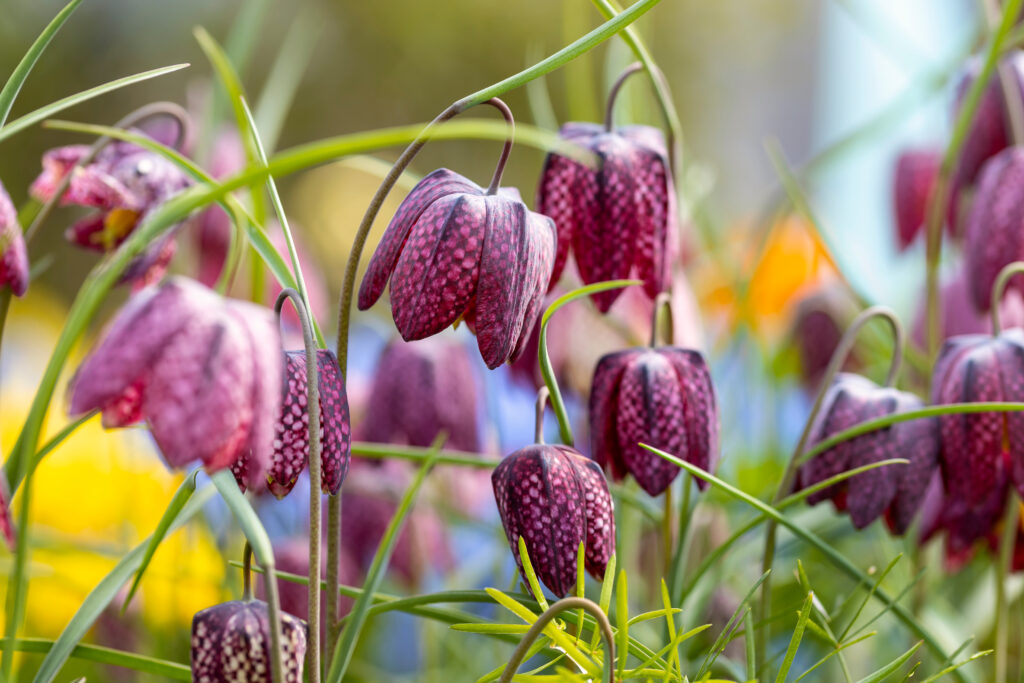
Irises
Technically not a bulb but planted similarly in late summer, bearded irises are drought-tolerant, long-lived, and available in just about every color.
- Colors: Wide range from white and pastel to deep jewel tones and bold bi-colors
- Bloom time: Late spring into early summer
- Where to plant: Sunny, well-drained spots like borders, slopes, and dry garden beds
- Important note: Plant rhizomes just below the soil surface, with the tops exposed to sunlight—burying them too deep can prevent blooming
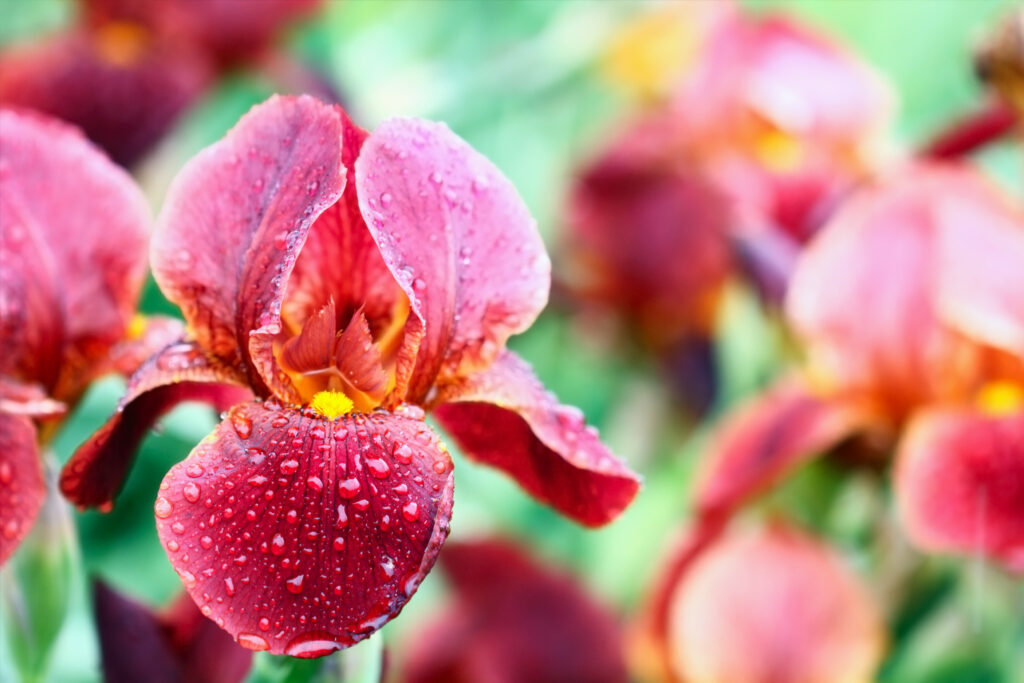
Where to Plant Bulbs
Most spring bulbs love full sun, so keep that in mind when picking your planting spots.
Garden beds and borders: Look for sunny spaces that need early color.
Under deciduous trees: In early spring, they’ll get plenty of light before leaves fill in.
Containers: Many bulbs thrive in pots. Just use one deep enough and protect it from freezing.
Plant bulbs where they can peek out between perennials, along paths and driveways, or near the front door where you’ll really appreciate them.
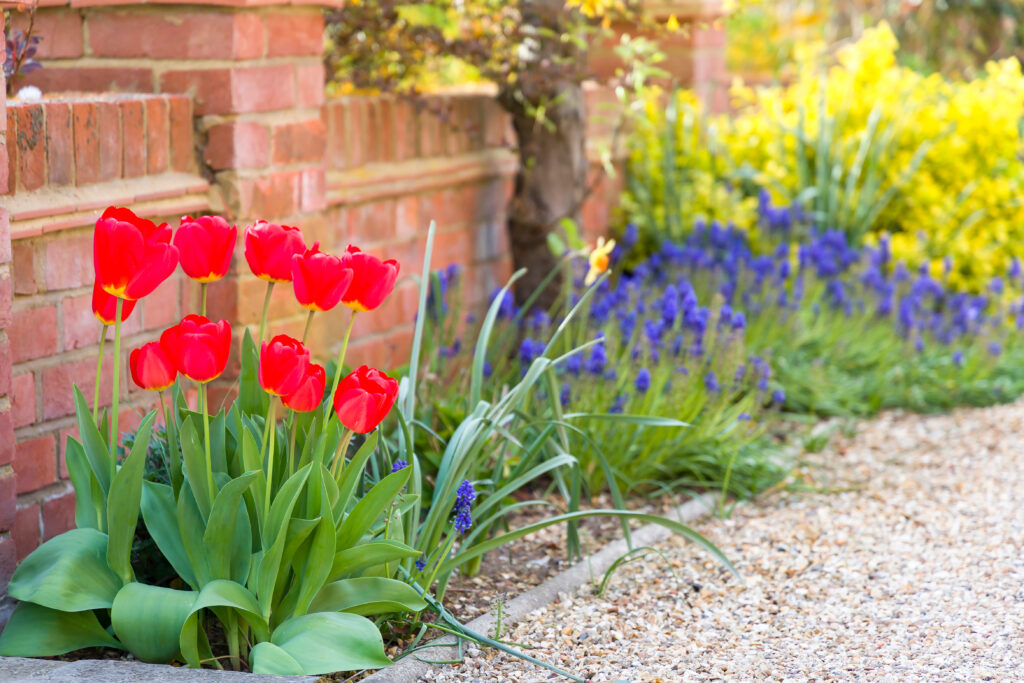
Quick Planting Tips
We’ll share more once fall planting season kicks off, but here’s a quick preview to help you feel prepared:
- Plant bulbs two to three times as deep as the bulb is tall
- The pointy side faces up (but don’t worry too much—they’re surprisingly forgiving)
- Add a little bone meal or bulb fertilizer at planting time
- Water well after planting to settle the soil and encourage root growth
- In Boise, aim to plant between late September and early November, before the first hard frost.
Start Your Spring Garden Now
Ordering bulbs in August gives you a head start. You will have more options, more time to plan, and a smoother planting experience once fall arrives.
If you’re ready to get started:
- Grab your garden notebook or start sketching out ideas
- Look at areas in your yard that could use early-season color
- Choose a mix of early, mid, and late bloomers for longer-lasting impact
- Place your order soon, before popular varieties sell out
Not sure what to choose or where to plant? Contact us or ask about our fall bulb planting services. We would love to help you create a spring garden that feels like a reward for making it through winter.
CATEGORY
8/12/2025
a word from our viewers